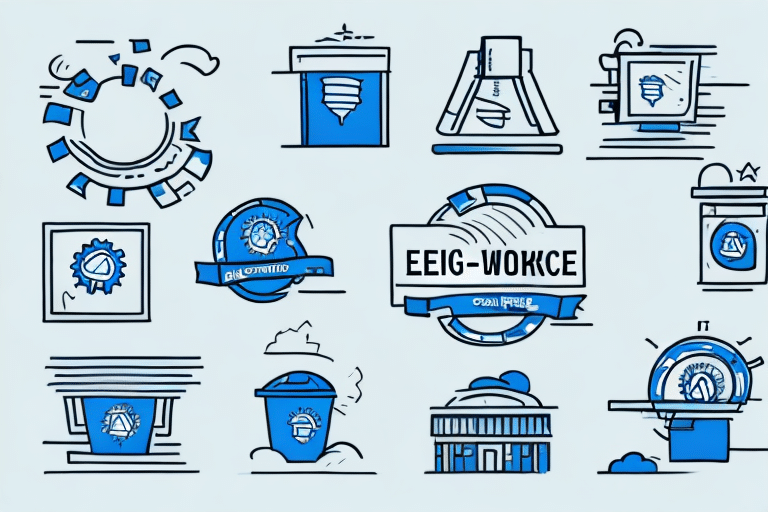Introduction to Cost-Saving Strategies in the Workplace
In today’s competitive business environment, finding ways to reduce expenses without compromising on quality or productivity is crucial. Implementing effective cost-saving strategies can enhance your company's profitability and sustainability. This guide explores comprehensive methods to help you manage and decrease workplace costs efficiently.
Optimizing Office Supply and Equipment Costs
Conduct a Comprehensive Inventory
Begin by assessing your current office supplies and equipment. Identify items that are overstocked, underutilized, or obsolete. Tools like Google Sheets can help maintain an organized inventory, ensuring that you only purchase what’s necessary.
Embrace a Paperless Environment
Transitioning to digital documents can significantly reduce paper, printing, and storage costs. Utilize digital document management systems such as Dropbox or Google Docs to store and share files electronically. Implementing electronic signatures with services like DocuSign further minimizes the need for physical documents.
Invest in Refurbished or Lease Equipment
Purchasing refurbished equipment or opting for leasing options can lower initial costs. Refurbished technology often comes with warranties and can be a cost-effective alternative to new purchases. Leasing allows for regular upgrades without significant upfront investment, keeping your technology current and reducing long-term expenses.
Enhancing Energy Efficiency
Implement Energy-Efficient Technologies
Upgrading to energy-efficient lighting, such as LED bulbs, and appliances can reduce energy consumption by up to 75% compared to traditional options. According to the Energy Star program, businesses can achieve substantial savings on utility bills by making these changes.
Conduct Regular Energy Audits
Regular energy audits help identify areas where energy is wasted. Professionals can provide actionable recommendations, such as optimizing heating and cooling systems or improving insulation, to enhance overall energy efficiency.
Invest in Renewable Energy Sources
Adopting renewable energy sources like solar panels can lead to long-term savings. While the initial investment may be significant, solar energy can reduce energy bills and provide opportunities to sell excess energy back to the grid, offsetting costs over time.
Streamlining Operations and Processes
Adopt Lean Management Principles
Implementing lean management focuses on eliminating waste and improving efficiency within your operations. By streamlining workflows and reducing unnecessary steps, businesses can enhance productivity and lower operational costs.
Automate Repetitive Tasks
Utilize automation tools to handle repetitive tasks such as invoicing, payroll, and customer support. Software like QuickBooks for accounting and Zendesk for customer service can free up employee time, allowing them to focus on more strategic activities.
Encourage Employee Feedback and Innovation
Employees often have valuable insights into operational inefficiencies. Creating channels for feedback and encouraging innovative solutions can lead to cost-saving ideas and process improvements that benefit the entire organization.
Managing Employee Benefits and Engagement
Offer Flexible Work Arrangements
Providing options for remote work or flexible hours can reduce overhead costs related to office space and utilities. Additionally, flexible arrangements can improve employee satisfaction and retention, reducing recruitment and training expenses.
Implement Wellness Programs
Wellness programs that promote healthy habits can decrease healthcare costs and boost productivity. Initiatives can include gym memberships, mental health support, or regular health screenings, contributing to a healthier and more engaged workforce.
Provide Professional Development Opportunities
Investing in employee training and development enhances skills and increases job satisfaction, leading to higher retention rates. Online platforms like Coursera offer cost-effective training options that can benefit both employees and the organization.
Negotiating with Vendors and Outsourcing
Negotiate Better Deals with Vendors
Research and compare prices from multiple vendors to ensure competitive pricing. Negotiating for volume discounts, extended payment terms, or bundled services can lead to significant savings. Building strong relationships with vendors can also result in more favorable terms and exclusive discounts.
Outsource Non-Core Functions
Outsourcing tasks such as payroll, IT support, or marketing can reduce overhead costs and allow your team to focus on core business activities. Platforms like Upwork provide access to a wide range of freelance professionals, offering flexibility and cost savings.
Leverage Strategic Partnerships
Forming strategic partnerships with other businesses can lead to mutual benefits, including shared resources and collaborative cost-saving initiatives. These partnerships can enhance service offerings and reduce expenses through shared investments.
Financial Planning and Tax Optimization
Maximize Tax Deductions
Working with a qualified accountant can help identify all eligible tax deductions, such as office rent, business travel, and equipment purchases. Utilizing deductions effectively can significantly reduce your overall tax liability, freeing up funds for other business needs.
Conduct Regular Financial Audits
Regular financial audits help identify cost-saving opportunities and ensure financial health. Audits can reveal unnecessary expenses and areas where efficiency can be improved, as outlined by the IRS guidelines.
Create a Long-Term Cost-Saving Plan
Developing a strategic plan for cost savings involves setting goals, monitoring expenses, and continuously identifying improvement areas. Engaging employees in this process can drive sustainable financial management and foster a culture of cost consciousness throughout the organization.
Implementing a Paperless Office
Adopt Digital Document Management Systems
Utilizing digital platforms to store and share files electronically minimizes the need for paper and physical storage. Systems like Dropbox or Google Drive offer secure and efficient ways to manage documents, enhancing accessibility and collaboration.
Reduce Physical Storage Needs
Digitizing your files eliminates the requirement for bulky filing cabinets and storage boxes, freeing up valuable office space. Digital storage solutions also provide the advantage of easy backup and remote access, ensuring your documents are safe and accessible from anywhere.
Promote Environmental Sustainability
Going paperless not only saves costs but also benefits the environment by reducing paper consumption and carbon emissions associated with paper production and transportation. Highlighting these environmental benefits can enhance your company’s reputation as a socially responsible business.
Conclusion
Implementing these cost-saving strategies can significantly enhance your business’s financial health without compromising on quality or productivity. By optimizing office supplies, enhancing energy efficiency, streamlining operations, effectively managing employee benefits, negotiating with vendors, and embracing financial planning, you can achieve sustainable cost reductions and improve your bottom line. Consistently applying these methods will help your business thrive in a competitive market while maintaining high standards of operation.




















